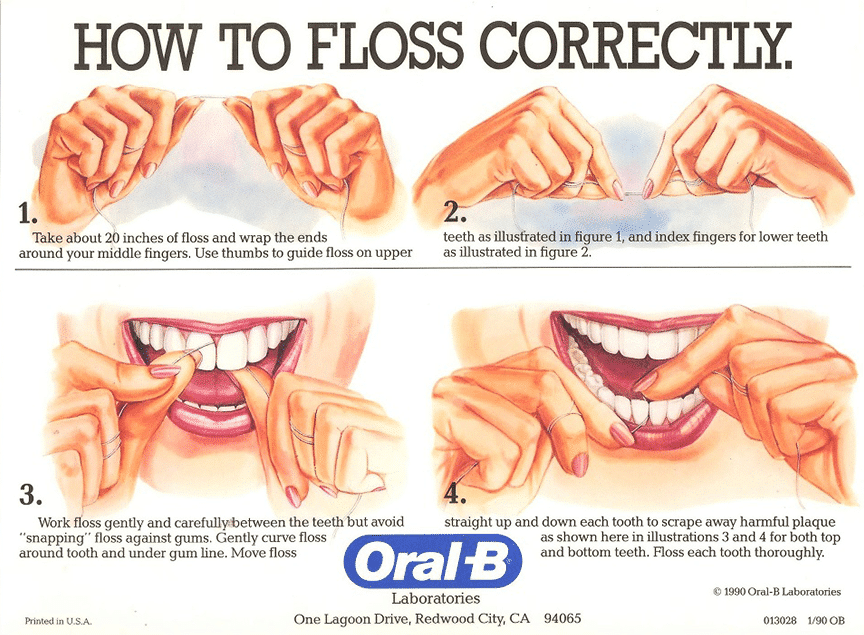
The first month of 2018 is behind us and I’d like to kick off the second by reminding you to KEEP ON FLOSSING!
In the many months since a story questioning the necessity of flossing arrived on the internet, the subject just doesn’t die. The story was about how flossing your teeth daily hasn’t been proven by research. Consequently, some people began believing that flossing is overrated and not as important to oral health as dentists have been saying since modern tooth floss came to life in 1819.
Even sadder to say, people continue to spread the word that flossing isn’t important. In this internet day-and-age, such bad advice will live a long, unproductive life.
While brush and flossing are not a guarantee you’ll never have a dental issue, I’ve said before and I’ll write it again today: It would be foolish of anyone to stop or curtail the frequency of flossing because of these news reports. As a matter of fact, I and my staff encourage patients to make SURE that they do floss daily.
You can decide for yourself whether or not you should continue (or even start) flossing, but let me say that common sense should tell you that an oral hygiene regimen of twice-daily brushing and a daily flossing is good for your teeth.
Just for the record, the American Dental Association supports flossing, as does the U.S. Department of Health and Human Services, which took the step to issue a statement in support of flossing after reports surfaced that called flossing’s effectiveness into question.
Here are the five steps recommended by the ADA for proper flossing (your hygienist will demonstrate this with you at your cleaning appointment):
- Break off about 18 inches of floss and wind most of it around one of your middle fingers. Wind the remaining floss around the same finger of the opposite hand. This finger will take up the floss as it becomes dirty.
- Hold the floss tightly between your thumbs and forefingers.
- Guide the floss between your teeth using a gentle rubbing motion. Never snap the floss into the gums.
- When the floss reaches the gum line, curve it into a C shape against one tooth. Gently slide it into the space between the gum and the tooth.
- Hold the floss tightly against the tooth. Gently rub the side of the tooth, moving the floss away from the gum with up and down motions. Repeat this method on the rest of your teeth. Don’t forget the back side of your last tooth.
Once you’re finished, throw the floss away. A used piece of floss won’t be as effective and could leave bacteria behind in your mouth. Here are a couple of links to the ADA’s website about flossing:
http://www.mouthhealthy.org/en/az-topics/f/flossing
http://www.mouthhealthy.org/en/az-topics/f/Flossing%20Steps
Some of the news stories that discussed the importance of flossing cited that there isn’t enough research to show the benefits of flossing. Well, I’d like to say that before I’m convinced that proper flossing doesn’t help with your oral health, someone needs to do detailed research and present the findings for medical professionals to examine. Just saying there isn’t enough research doesn’t cut it.
It’s silly, but someone is trying to tell you the proof is in a lack of proof.
What studies do continue to show is a large number of adults in both the United States and across the world struggle with periodontal disease. I’ve written about this before on this blog and periodontal disease shows its highest percentage in older people. Periodontal disease ultimately leads to bone loss and therefore the loss of teeth. It is also linked to a variety of other ills including cardiovascular problems.
Remember, there’s an old dental adage that reminds us of the importance of brushing (no, it doesn’t include flossing, but should): “Brush only the teeth you wish to keep.”